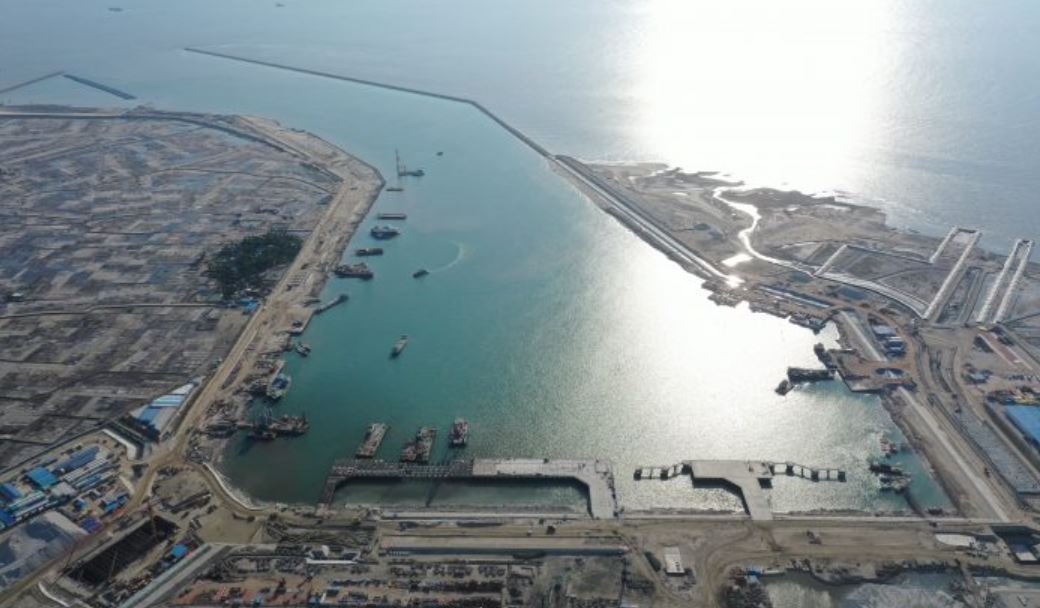The construction of Bangladesh’s first breakwater has drawn attention to the Matarbari facility in Cox’s Bazar. The authorities have already completed construction of the breakwater in the Matarbari Sea Port, although the port is scheduled to begin its journey in 2026. The size of the breakwater in Matarbari is 2.15 kilometres on the north side and 670 metres on the south side of the approach channel, plus two jetties at the coal-fired power plant.
YOU CAN ALSO READ: WHY THERE’S DECLINING REMITTANCE DESPITE RISING MANPOWER EXPORT?
Matarbari Port in Cox’s Bazar is the first deep-sea port in Bangladesh, which is being constructed to facilitate the transportation of goods through ship channels. As ships can transport a large number of goods in a comparatively short period of time and the transportation procedures are less expensive than the other options available. After completion of the port, it will open the door to many maritime facilities in Bangladesh, as well as provide financial benefits.
What is a breakwater?
A breakwater is a structure constructed along the coast to protect harbours or beaches from the force of waves. These walls are made from various materials, including wood and stone, but their durability is the key factor in their design. A well-built breakwater should withstand even the most powerful waves. Other names for breakwaters include moles, spurs, and sea walls etc.
Key aspects of Matarbari sea port’s breakwater
Matarbari Sea Port’s breakwater has been built with stone blocks so that it can endure and deflect strong waves of the sea, and the ships that are docked at the jetty can also stay steady at the time of high waves. This breakwater will allow ships to load and unload goods in a smoother way as the risk of being damaged by a high tide of wave decreases. Again, the possibility of filling the channel with salt will also decrease significantly.
Significance of Matarbari Sea Port:
Despite being Bangladesh’s largest seaport, Chattogram Sea Port’s jetties can only carry 2,000 TEU of containers on average. On the other hand, if successfully handled, then the Matarbari seaport alone can allow its jetties to carry 8,000–10,000 TEU of containers. The parliamentary standing committee on the Ministry of Shipping of Bangladesh has visited the port and is expected to open the port by the deadline of 2026.
Before that, Rear Admiral M. Shahjahan, the chairman of the Chattogram Port Authority (CPA), said in a report that, after starting its operations, Matarbari will become a commerce and trade hub for the region.
Under the capacity of this port, the larger jetty of 460 metres can allow the docking of up to 350-metre-long container ships. The other, which is 300 metres long, can dock ships up to 200 metres in length. As the channel is 16 metres deep, it will allow ships to enter the port with a 15-metre draft.
Work progress of the whole plant
A source revealed that, with the current pace of the work procedures happening here, we will be able to see the start of 27 km of connecting road construction in March this year, which will connect Matarbari terminal with the Chattogram-Cox’s Bazar highway.
Abul Kalam Azad, the Executive Director of CPGCBL, said that the power plant project is almost done, with 70% completion of the construction process. So, we can now hope to see the loading and unloading of goods through the two jetties in the near future.
He also added, “The port will receive 60,000 to 80,000 metric tons of coal around March next year.” So, with the current rate of progress, we can expect to begin operations in this port in late 2025 or early 2026. For the coal power plant project, so far 112 ships have brought materials into the port, starting this influx of materials on December 29, 2020.


